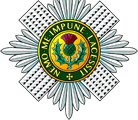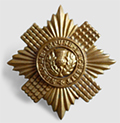Major Adrian John Anthony Weir
Service Number 176758
Campaign:
World War 2
Died:
28.2.1944
1SG
Aged 23
Buried at Beach Head War Cemetery, Anzio, Italy. V, H, 3
John Weir was born 22 August 1920, the younger son of Wing-Commander Archibald Graham Weir (who was lost at sea on active service in April 1941) and Mary Evelyn Oldfeld Weir, daughter of Canon Charles Oldfield Bartlett, Canon of Gloucester, of Pensbury House, Shaftesbury, Dorset. He was also the brother of Flying Officer A. Nigel C. Weir, DFC (I1932-1937), who was shot down and killed in November 1940 (see individual entry).
Weir won a scholarship in Modern Languages at Brasenose College and left Winchester in March 1939. He spent the summer at home, intending to go up to Brasenose that October. However, on the outbreak of war he attempted to join the RAF like his father and elder brother. Meeting with delay, he went to Oxford for two terms, passing the examinations required for a ‘War Degree’. He then tried the RAF again: he was accepted, only to be turned down again due to an unsuspected problem with his ears.
In September 1940 he joined the Scots Guards, and in March 1941 gained his commission as a Second Lieutenant. He went to Cyprus with the Household Cavalry in January 1942, having been attached to them at Windsor for a year but returned to his own regiment in Syria in September. After a long trek across North Africa, his battalion joined the Eighth Army shortly before the attack on the Mareth Line. He was awarded the MC for particularly good work on several patrols around Enfidaville in April 1943 and Pawson’s book records the circumstances - 'Much earlier he had been wounded in Africa near Mareth. Within a fortnight John was back leading his carrier platoon in three exceptionally successful patrols. These netted around fifty prisoners, gathered crucial intelligence, and prevented the mining of a key road, for all of which Weir was awarded the MC... In his report on that campaign, his Commanding Officer’s comments included: “The outstanding officer of the Battalion is John Weir, who is absolutely first-class with his carriers'.
Weir was promoted to Captain in July 1943 and took part in the original landing at Salerno, soon after being appointed Adjutant. In January 1944 he was transferred to 1st Battalion, on the Anzio front, with the acting rank of Major. The battalion was under the command of a fellow Wykehamist, Lieutenant-Colonel David Scrymgeour-Wedderburn DSO (K 1925-1930). Anzio was an expensive battle for Wykehamists, and four died in 1st Scots Guards alone. On 4 February 2nd Lieutenant Duncan Gilbert Scott McMurtrie (I 1937-1941) was killed in action; Captain John Henry Lund Sinclair (I 1934-1939), a member of Weir’s Company, followed on 8 February ; and Scrymgeour-Wedderburn died of wounds on 1 March 1944, having been injured by the same blast which killed Weir. Weir was killed in action by shell-fire on 28 February at the age of twenty-three.
Tony Pawson recalled: 'The timing and manner of his death made it the more distressing. By then he was a Major in the Scots Guards, and his battalion had just been moved to a rest area to await being shipped away from Anzio and re-organized after its multiple casualties. As a long-serving officer, John qualified for return to England, and an eagerly-awaited marriage. Often a barrage of shells only causes a few casualties. In this instance just three ‘strays’ were devastating. The first wounded an officer. As others ran to help two more hit the trees beside them. That turned the shells into lethal ‘airbursts’, which instantly killed John and four other officers, and mortally wounded the Commanding Officer [Scrymgeour- Wedderburn]'.
The Scots Guards history records how good an officer Major Weir had been: 'John Weir was probably the best Company Commander in the Brigade'. But the final judgement on an officer is what his men think of him. When he was killed their comments to his family were equally effusive. One wrote: 'Right Flank Company mourned John’s death to a man. Many have I heard – old soldiers too – say that he was the best Company Commander they ever had'. His Sergeant’s letter was in the same vein: 'Many of the platoon spoke to me of how they admired and liked your son’s firm, but friendly, manner in the way he treated officer, or NCO, or guardsman alike'. (from Tony Pawson, Indelible Memories, 2004)
John's death was a final blow to a family shattered by its losses in the war, as can be seen from a notice in The Times of April 26th 1944: 'A service will be held at the Church of the Holy Trinity, Shaftesbury, at 1215 on Monday, May 1st, in memory of Major John Weir, MC, Scots Guards, recently killed in action, and of his father, Wing Commander A.G. Weir RAF, lost at sea on active service in April 1941, and of his elder brother, F/O Nigel Weir DFC, RAFVR, killed in action, November 1940'.
Weir rests in grave V.H.3 of the Beach Head War Cemetery, Anzio. As The Times’ obituarist put it: 'That he should have been killed by a chance shell at Anzio is a tragedy for his many friends and for the regiment. But there is another side of him without which the picture is incomplete – his pursuit of shooting on the Solway, in Syria, and even in the marshes of the Garigliano; his love of the country and especially of Pensbury, to which so many of his letters referred; his love of his many friends of very different types; his devotion to his family. And so John has followed worthily in the footsteps of his father and brother, leaving behind him many proud hearts'.
Memorial(s):
| Country | Location | Name of Memorial | Campaign | Names | Date(s) | |
|---|---|---|---|---|---|---|
| England | Winchester College College Street Winchester SO23 9NA | Winchester College WW1 and WW2 | World War 1 World War 2 |
Adrian Weir | 28-2-1944 | View |
Further information:
Find more information about a specific soldier visit findmypast. The Scots Guards are delighted that their Enlistment Books from 1840 to 1938 are now available at:

If you have information on a specific memorial please send it on to the Historical Committee. The Memorial information required is:
- Who or what formation of the Regiment is named on the memorial. What event, dates or other inscriptions on the memorial.
- The country, nearest town/city or other details of location.
- A description of the memorial with a photograph if possible.
- For bigger sites a copy of any advertising information or leaflets would be useful.
Please sent any information that you find to: Michael Campbell-Lamerton
As the information on the database builds up Michael Campbell-Lamerton will be sending regular updates to Archives at RHQ who remains the point of contact about for inquiries on past members of the Regiment.


